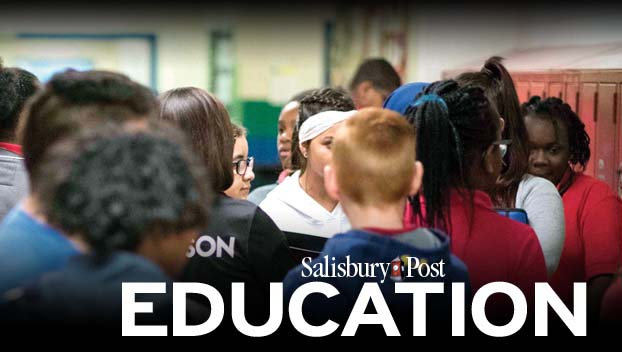Funding flat, enrollment down slightly for Rowan-Salisbury Schools
Published 12:00 am Friday, September 18, 2020
By Carl Blankenship
carl.blankenship@salisburypost.com
SALISBURY – Rowan-Salisbury Schools Associate Superintendent of Resources Carol Herndon says the district was expecting level enrollment before COVID-19 pandemic hit.
But like so many other things, COVID-19 has upended original expectations. After COVID-19 hit, Herndon said, the district is expected some sort of decrease.
The allotted average daily membership is a measure of enrollment at public school districts across the state. It’s also used to determine funding for school districts. This year, average daily membership is a flat estimate from the state based on the previous year in an effort to prevent large shifts in funding for public schools. But actual enrollment is slightly down.
While the allotted average daily membership for the district from the state is 18,756, the district is reporting 18,124 students as of its 16th day of school. Herndon said that figured should climb somewhat higher as the semester continues.
Education agencies across the state have taken hits to enrollment this semester. The effects are not limited to school districts, either. Four-year institutions and community colleges have seen enrollment declines due to the pandemic as well. Rowan-Cabarrus Community College, which has been one of the fastest-growing community colleges in the state in recent years, was down about 4% on enrollment at the start of this year.
“The comforting news is the state realizes these are unusual circumstances,” Herndon said.
Herndon said she’s not sure exactly how much a decrease in line with the actual enrollment would have affected the district’s funding, but it would have been significant. If ADM were up or down during a normal year, the district would return some funding to the state or receive additional funding according to the better of two figures calculated during the semester
A normal district receives funding allotments over the course of a year, but the special renewal status granted to RSS means it is given its state funding in a single block.
A sudden drop in students in a public school district is more concerning than a drop at a higher-education institution. Students who are of age to attend and below 16 years old are required to get an education.
Herndon said there were some issues with losing contact with families after the sudden end of last semester and before the beginning of this semester. But district social worker Brynn Falls said the district has managed to make contact with almost all of the unaccounted for students.
“The first thing we’re all doing is trying to contact parents, whether that be through calling them, texting them or emailing them, whatever contact information we have,” Falls said. “Beyond that, maybe if we aren’t getting a response from parents, reaching out to emergency contacts the parents have provided us in the past.”
The district also attempts to message students and parents via educational platforms and performs home visits if necessary to make contact. Some have enrolled in private schools or homeschool or are finalizing approval of their homeschools but did not notify the district.
Still, Falls said the district is having more trouble reaching families than in the past
Because of the special provision by the state, there would be no adjustment this year unless a new charter school begins pulling a significant number of students away from the district, but the only new charter school in the works is Faith Academy. If that school’s charter is approved next month it is not planning to begin classes until the 2021-2022 school year.




